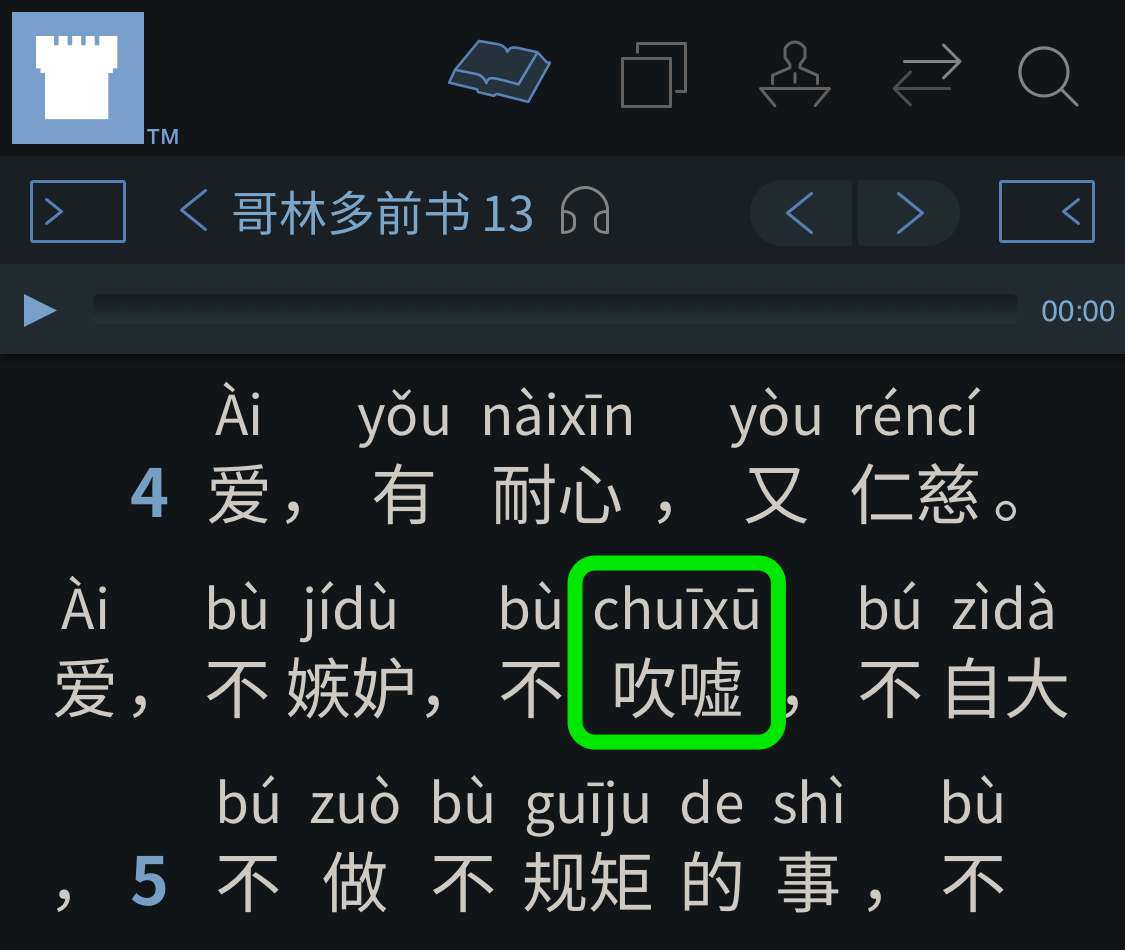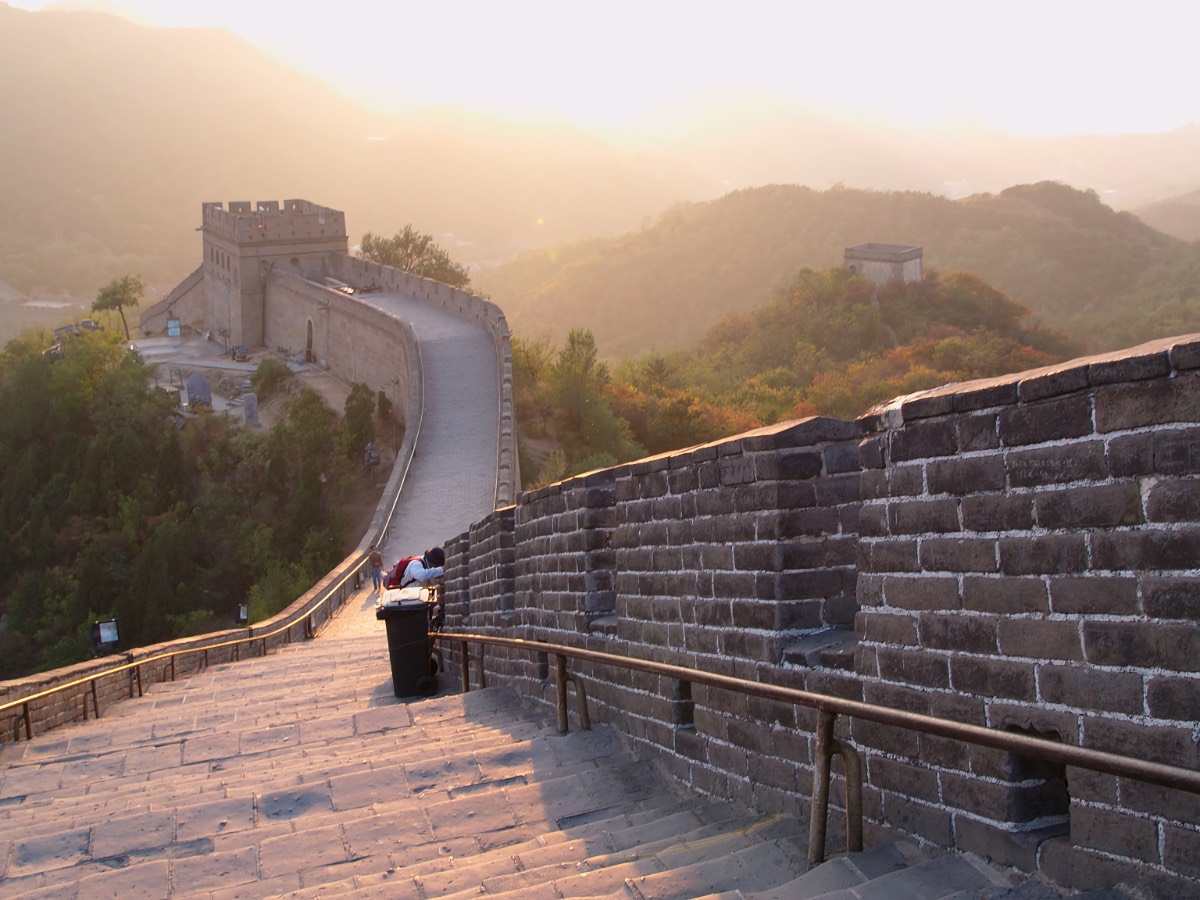Zhōngyāng Zhǎnglǎo‐Tuán ((Zhōngyāng Central 中央) (Zhǎng·lǎo {Grown → [Elder]} · Old (Men) → [Elders] 长老 長老)‐(Tuán {Rolled into a Ball} → [Group] → [Body] 团 團/糰) → [Governing Body]) ← Tap/click to show/hide the “flashcard”
[Notes: Tap/click on a Pīnyīn (Pīn·yīn {Piecing Together of} · Sounds → [Pinyin] 拼音) expression to reveal its “flashcard”; tap/click on a “flashcard” or its Pīnyīn (Pīn·yīn {Piecing Together of} · Sounds → [Pinyin] 拼音) expression to hide the “flashcard”. 📖 📄 📘 icons mean 📖 Reveal All, 📄 Reveal Advanced, and 📘 Reveal None re all the “flashcards” in the heading, paragraph, etc. that they are placed at the beginning of.]
A few years back, I wrote up a brief web page listing reasons for producing Pīnyīn (Pīn·yīn {Piecing Together of} · Sounds → [Pinyin] 拼音), etc. material for the Imitate (ia) book. Some, especially some who grew up in the West, may have felt that this book is made up of “just stories”, and ones that they were already quite familiar with, at that. However, we must remember that Chinese Bible students may often have a different perspective regarding the Bible accounts that are made to come to life in the Imitate book. As that web page said:
- Many Chinese people in the world have not been exposed to Bible accounts the way many Westerners have.
- Also, I have heard that some, perhaps many, Chinese Bible students tend to approach their Bible studies like intellectual exercises for accumulating chōuxiàng (abstract) head knowledge as if for a school exam, rather than as training for their hearts for their own real lives.
Later, the web page touches on how some of the real-world benefits of good storytelling like that found in the Imitate book involve empathy:
- …
- The actress Natalie Portman once said, “I love acting. I think it’s the most amazing thing to be able to do. Your job is practicing empathy. You walk down the street imagining every person’s life.”
- The Imitate book helps build Bible students’ empathy towards Bible characters, which in turn helps Bible students realize that others would feel empathy towards them as well if they imitated these Bible characters—not everyone will just think they’re crazy, like many worldly friends or family members might think.
While even fictional stories can have the benefits described in the links and the quote above, true stories from the Bible can have even greater benefits, including spiritual ones.
Besides the Imitate book, another book from Jehovah’s organization that relates Bible accounts is the Learn From the Bible (lfb) book. The letter from the Governing Body in this book says that, similarly to the Imitate book, the Learn From the Bible book also “brings the Bible accounts to life and captures the feelings of those depicted”, while, unlike the Imitate book, it “tells the story of the human family from creation onward”. While the Learn From the Bible book is especially suitable for children, the letter from the Governing Body in this book says that “it can also be used to help adults who desire to learn more about the Bible”. So, it would be good to consider on this blog some of the expressions used in the Mandarin Learn From the Bible book.
You Have Mail!
This week’s MEotW, “Zhōngyāng Zhǎnglǎo‐Tuán ((Zhōngyāng Central 中央) (Zhǎng·lǎo {Grown → [Elder]} · Old (Men) → [Elders] 长老 長老)‐(Tuán {Rolled into a Ball} → [Group] → [Body] 团 團/糰) → [Governing Body])”, appears near the beginning of the Mandarin Learn From the Bible book:
A Letter From the Governing Body
Mandarin (WOL, Pīnyīn (Pīn·yīn {Piecing Together of} · Sounds → [Pinyin] 拼音) Plus):
📖 📄 📘 Zhōngyāng Zhǎnglǎo‐Tuán ((Zhōngyāng Central 中央) (Zhǎng·lǎo {Grown → [Elder]} · Old (Men) → [Elders] 长老 長老)‐(Tuán {Rolled into a Ball} → [Group] → [Body] 团 團/糰) → [Governing Body]) de (’s 的) Xìn (Letter 信)
We can see from the above that “Zhōngyāng Zhǎnglǎo‐Tuán ((Zhōngyāng Central 中央) (Zhǎng·lǎo {Grown → [Elder]} · Old (Men) → [Elders] 长老 長老)‐(Tuán {Rolled into a Ball} → [Group] → [Body] 团 團/糰) → [Governing Body])” is the official Mandarin expression used to translate “Governing Body”. What morphemes and words are used to make up this Mandarin expression? What do they mean? How do they work together to make up the whole expression?
Central, But Not Necessarily in the Central Kingdom
Both the morphemes in “zhōngyāng (centre | central 中央)” mean “centre” or “central”. Years ago, a sister expressed to me that she doubted that the organization would use the expression “zhōngyāng (centre | central 中央)”, since it was such a mainland China-coded expression that’s often used by the current central government there. In fact, Pleco’s built-in dictionary says that it can be an abbreviation for “Zhōngguó Gòngchǎn‐Dǎng Zhōngyāng Wěiyuán‐Huì ((Zhōng·guó Central · Nation → [Chinese] 中国 中國) (Gòng·chǎn {Commonly Possessing} · {Produced (Things) → [Property]} → [Communist] 共产 共產)‐(Dǎng Party 党 黨/党) (Zhōngyāng Central 中央) {(Wěi·yuán Entrusted · Members 委员 委員)‐(Huì Gathering 会 會) → [Committee]} → [Central Committee of the Communist Party of China])” (“Central Committee of the Communist Party of China”). Another example is “Zhōngguó Zhōngyāng Diànshì‐Tái ((Zhōng·guó Central · Nation → [China] 中国 中國) (Zhōngyāng Central 中央) (Diàn·shì Electric · {Looking At} → [Television] 电视 電視)‐(Tái Platform → [Station] 台 台/臺) → [China Central Television (CCTV)])” (“China Central Television (CCTV)”), the national television broadcaster of China. However, mitigating against the concern that “zhōngyāng (centre | central 中央)” is overly connected to mainland China is that it’s used in “Zhōngyāng Qíngbào‐Jú ((Zhōngyāng Central 中央) (Qíng·bào Situation; Circumstances · Reporting → [Intelligence] 情报 情報)‐(Jú Bureau; Office → [Agency] 局) → [Central Intelligence Agency (CIA)])”, the Mandarin expression referring to the US’s Central Intelligence Agency (CIA). Anyway, the organization has decided that it’s not a problem to use “zhōngyāng (centre | central 中央)” in the official Mandarin expression referring to the Governing Body.
Old (Man/Men)
“Zhǎnglǎo (Zhǎng·lǎo {grown → [elder]} · old (men) → [elders] 长老 長老)” literally just means “grown old”, without any explicit reference to any man or men. However, it’s used such that it has an effective meaning of “elder (man/men)”, and it’s used by the organization to refer to the elders within the organization. There are many Mandarin expressions that follow this pattern of explicitly meaning a description, while only implicitly meaning that this description applies to a person, or to persons. Another example is “jìsī (jì·sī {offering sacrifices} · {taking charge [of]}; {attending [to]}; managing (person) → [priest] 祭司)”, which literally just means “offering sacrifices, attending to”, but which effectively means “priest[s]”, an implied person, or implied persons, to whom the literal description applies.
Towards a Clearer Style
In the rendering “Zhōngyāng Zhǎnglǎo‐Tuán ((Zhōngyāng Central 中央) (Zhǎng·lǎo {Grown → [Elder]} · Old (Men) → [Elders] 长老 長老)‐(Tuán {Rolled into a Ball} → [Group] → [Body] 团 團/糰) → [Governing Body])”, following after “Zhǎnglǎo (Zhǎng·lǎo {Grown → [Elder]} · Old (Men) → [Elders] 长老 長老)” is a hyphen. This is not a typical Pīnyīn (Pīn·yīn {Piecing Together of} · Sounds → [Pinyin] 拼音) rendering, if anything is typical about Pīnyīn (Pīn·yīn {Piecing Together of} · Sounds → [Pinyin] 拼音) in this characters-dominated world—typically, one would encounter “Zhǎnglǎotuán (Zhǎng·lǎo·tuán {{Grown → [Elder]} · Old (Men) → [Elders]} · {{Rolled into a Ball} → [Group] → [Body]} 长老团 長老團/糰)”, rendered as a single, uninterrupted word. However, I have been leaning towards the view that such relatively long, uninterrupted words are relatively difficult to parse, or mentally break down into meaningful components. So, I have been adopting the practice of inserting hyphens in expressions that are typically rendered as long, uninterrupted words, between expressions like “zhǎnglǎo (zhǎng·lǎo {grown → [elder]} · old (men) → [elders] 长老 長老)” and “tuán ({roll sth. into a ball} → [unite; assemble | sth. roundish; lump | group; society; organization | round; circular | [mw for roundish things]] 团 團/糰)” that can stand alone as words. This makes it easier for readers to mentally come to grips with how multi-word expressions are constructed, with how they mean what they mean.
Even with the English writing system, which has been around for centuries and is very widely used, there remain similarly differing opinions on word separation and hyphenation, as well as differing opinions on things like the Oxford (serial) comma, British and American spellings, capitalization, etc. Different organizations, in fact, have different style guides regarding how to use the English writing system. It should not be surprising, then, that a relatively “young” writing system like Pīnyīn (Pīn·yīn {Piecing Together of} · Sounds → [Pinyin] 拼音), which additionally faces cultural prejudices unfairly limiting its use, has some aspects regarding which differing opinions still exist, which may get hammered out to an extent with time and greater usage by many different people.
Having a Ball
Coming to the final morpheme of this week’s MEotW, note that while “tuán ({roll sth. into a ball} → [unite; assemble | sth. roundish; lump | group; society; organization | round; circular | [mw for roundish things]] 团 團/糰)” effectively means “group” or “body”, it literally means “roll something into a ball”, and can also mean “roundish mass; lump”! So, “zhǎnglǎo (zhǎng·lǎo {grown → [elder]} · old (men) → [elders] 长老 長老)‐tuán ({rolled into a ball} → [group] → [body] 团 團/糰)” suggests the mental image of a number of elders rolled into a ball or roundish mass, so that they become a body of elders. Hopefully, elders in the Mandarin field will be able to find this Mandarin wording amusing rather than be offended by it!
Anyway, the morphemes in “Zhōngyāng Zhǎnglǎo‐Tuán ((Zhōngyāng Central 中央) (Zhǎng·lǎo {Grown → [Elder]} · Old (Men) → [Elders] 长老 長老)‐(Tuán {Rolled into a Ball} → [Group] → [Body] 团 團/糰) → [Governing Body])” on a certain level of literalness come together to mean “Central Body of Elders”, which matches nicely with the English expression “Governing Body”. In their letter near the beginning of the Learn From the Bible book, the Governing Body introduces this book and expresses their hopes for how it will be able to benefit people who make good use of it. May we do our part to help people in the Mandarin field to do so. Perhaps, we can start by showing them the letter from the Governing Body that’s contained in the Learn From the Bible book.
For convenience:
The direct link for the Pīnyīn (Pīn·yīn {Piecing Together of} · Sounds → [Pinyin] 拼音) Plus resource for the Learn From the Bible book is:
The short link for Chinese field language-learning links for the Learn From the Bible book is:
More Pīnyīn (Pīn·yīn {Piecing Together of} · Sounds → [Pinyin] 拼音) and Pīnyīn (Pīn·yīn {Piecing Together of} · Sounds → [Pinyin] 拼音) Plus web material based on the Mandarin Learn From the Bible book will be made available in the Pīnyīn (Pīn·yīn {Piecing Together of} · Sounds → [Pinyin] 拼音) Plus web resource as time allows.

